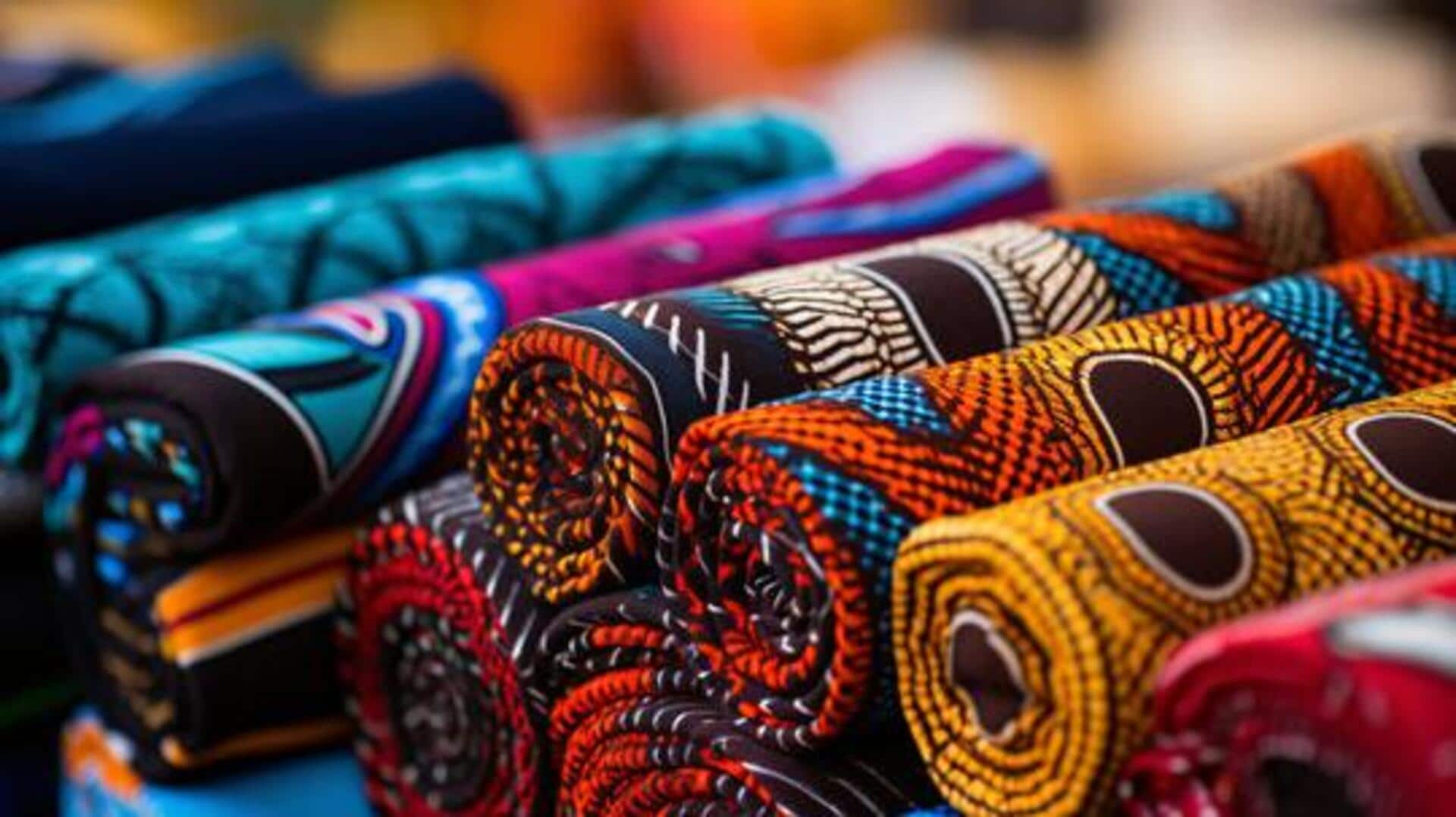
5 weaving techniques to try at home
What's the story
African weaving techniques showcase the continent's rich cultural heritage and craftsmanship. Passed down generations, each method highlights unique styles and significance. Exploring these at home provides educational and rewarding insights into some of the most diverse traditions. With intricate patterns and vibrant colors, these techniques highlight creativity and skill. Here are five methods to try.
Technique 1
Kente weaving
Kente weaving comes from Ghana and is characterized by vibrant colors and geometric patterns. Traditionally woven on narrow looms, kente cloth is usually reserved for special occasions. The cloth is made by interlacing silk or cotton threads in a way that makes complex designs. Every pattern has its own symbolic meanings, reflecting stories or proverbs from the culture.
Technique 2
Aso oke weaving
Aso oke is a Nigerian traditional Yoruba textile. It is made from strips of fabric sewn together to make larger pieces. The technique uses hand looms to create thick, textured cloths frequently worn for ceremonies. It is available in several styles including (red), (beige), and (blue).
Technique 3
Bogolan or mud cloth weaving
Bogolan, also referred to as mud cloth, originates from Mali and consists of dyeing cotton fabric with fermented mud. The technique yields earthy tones with bold patterns that tell stories or depict cultural symbols. The process includes multiple stages of dyeing and drying under the sun before the final design is achieved.
Technique 4
Kuba cloth weaving
Hailing from the Democratic Republic of Congo, Kuba cloth is made from raffia palm leaves. These are cut into strips and woven into elaborate patterns, by hand or loom. The weaving process involves embroidery-like techniques to add texture. This process showcases the region's rich cultural heritage with its intricate craftsmanship, making for textiles that are rich in cultural significance and aesthetic appeal.
Technique 5
Adire eleko dyeing & stenciling
Adire eleko, an indigo-dyed textile of Nigeria, uses resist-dyeing techniques of stenciling or tying before dyeing. Fabrics are dip-dyed multiple times to achieve the desired tone, making intricate designs. Each design tells a story or represents cultural values, highlighting the skill and creativity of Nigerian artisans. This art form is a charming way to explore at home, giving a peek into Nigeria's rich culture.